Aizu - Wakamatsu and Kitakata: Land of Ramen and Red Cows
| Travel Reports by Villagemayor | view profile of Villagemayor |
| previous post |
| next post |
| Note: The opinions and views expressed in this user report are those of the individual author and do not necessarily reflect the opinions and views of japan-guide.com. |
October 27, 2017 - Aizu - Wakamatsu and Kitakata: Land of Ramen and Red Cows
One of the places I had want to visit but wasn't actually on the top of my list was Aizu-Wakamatsu. I was interested in visiting a few places in this area including Ouchijuku (see the previous travel report) but that was it. Still, I was here, so let's see what Aizu had to offer.
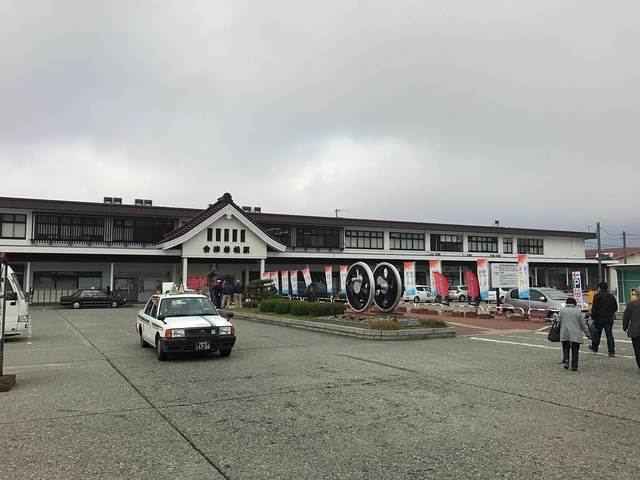
Travelling to Aizu - Wakamatsu from Koriyama takes about an hour either by train (on the JR Banetsu West Line) or the regional bus service. I took the bus which arrives in front of the train station.
You are greeted by a rather interesting front elevation. There is a walkway leading to the entrance where there are a few artifacts like the wheels of a steam locomotive and Akabeko, the legendary red cow.
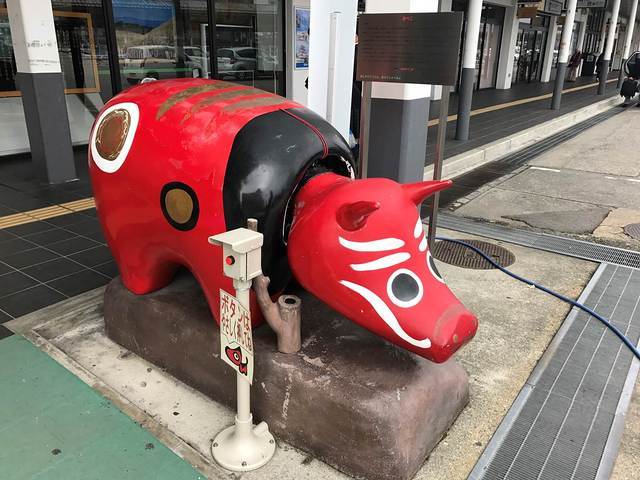


This colourful cow is everywhere in Aizu - Wakamatsu as a toy and souvenir. They even have a larger scale in front of the train station.
In the earlier travel report I had visited Ouchijuku, a thirty minute train ride from Aizu - Wakamatsu Station. In the afternoon I visited the city proper. The first and only stop was Limoriyama and Sazaedo Pagoda. You can take a tourist loop bus that takes you around the city cheaply and rather efficiently
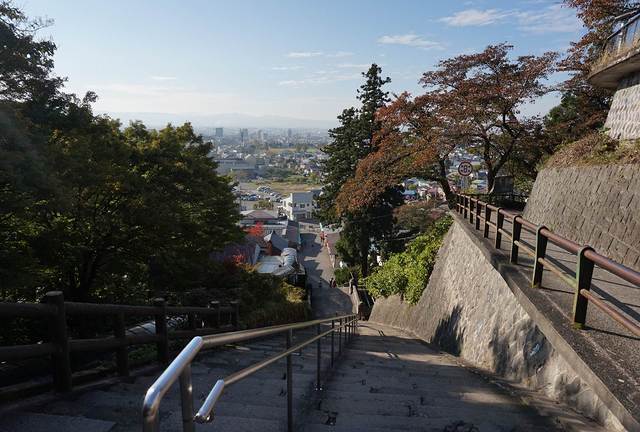
Taking the tourist loop bus from the train station, a five minute bus ride takes you to the Information Center for Limoriyama. Getting off the bus then walking for several minutes you come across a pathway lined with souvenir shops. The steep set of stairs is to the front. walking up the stairs you are afforded a view of the city below.
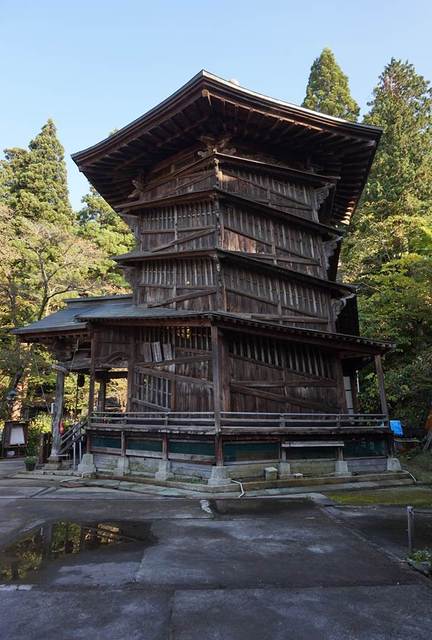
Within Iimoriyama there are various monuments to enjoy but one of the most important landmarks is this one above, the Sazaedo Pagoda. This pagoda is interesting because you can actually enter the structure. Entering into it on the right hand side, you can go up the steep wooden ramp to the top. The view from the top is pretty amazing as it affords a view of the surrounding area.
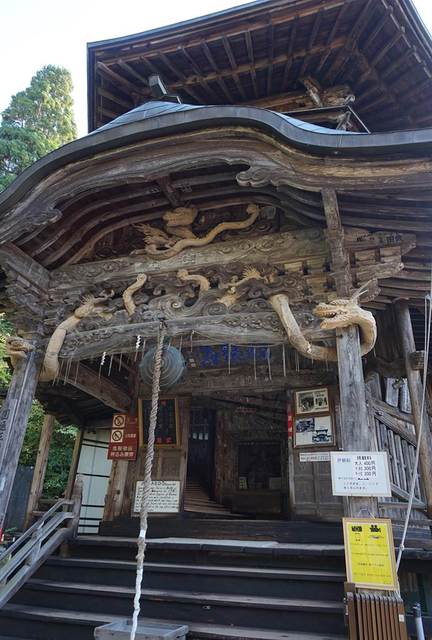
Once you are at the top of the pagoda you come back down the other ramp. This double helix design is very unique in any structure, let alone in an old wooden pagoda.
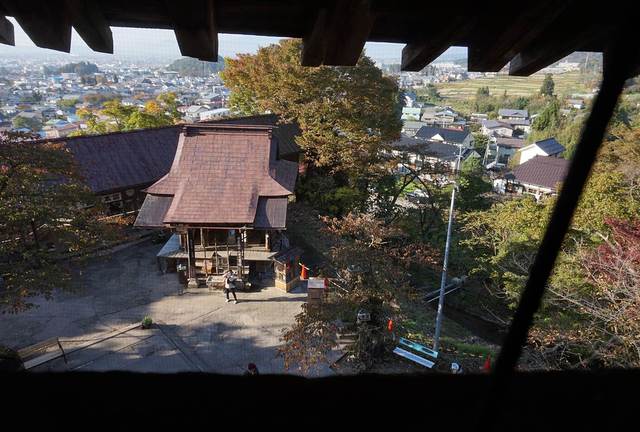
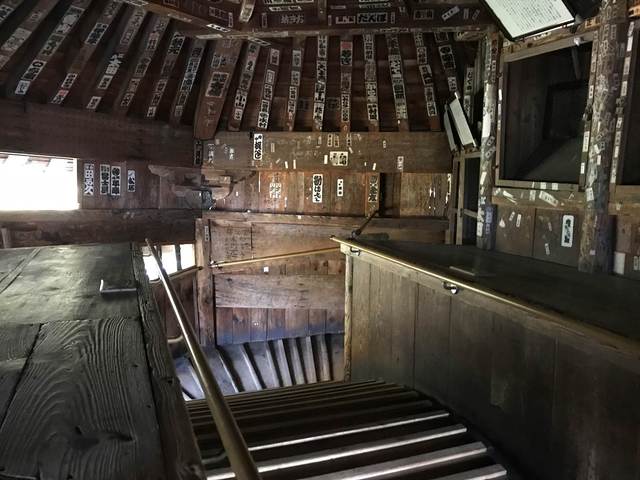
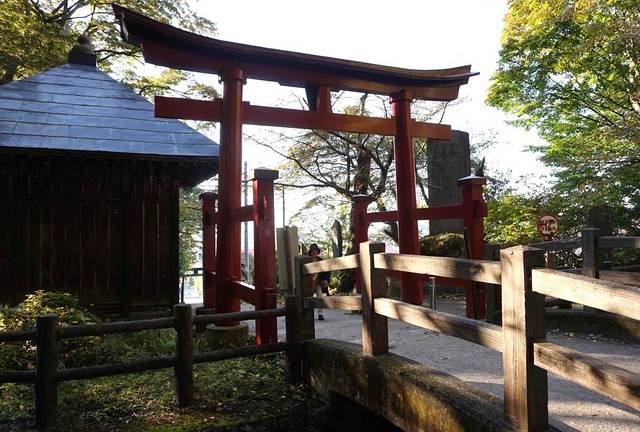
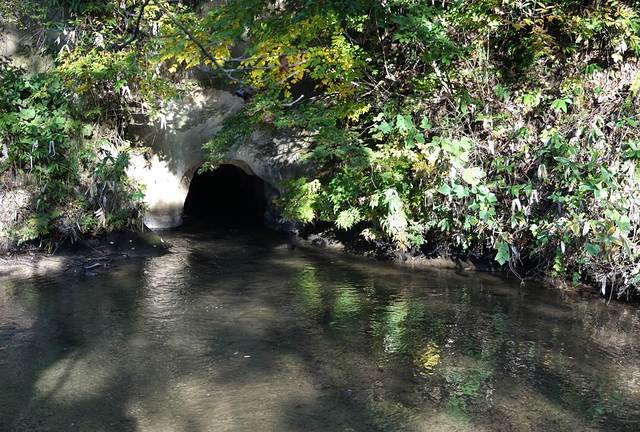
The remainder of the shrine grounds consist of an expansive landscaped area with a running brook that originates from a cave. There is also a few shrine structures as well such as a torii gate and a bridge. Tall evergreens tower over the visitors to the shrine.
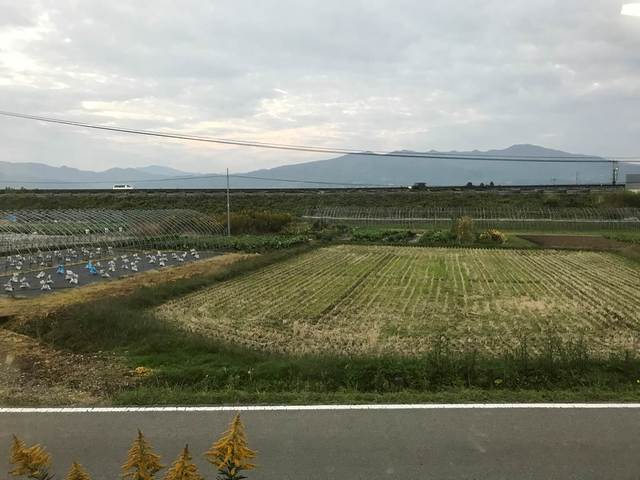
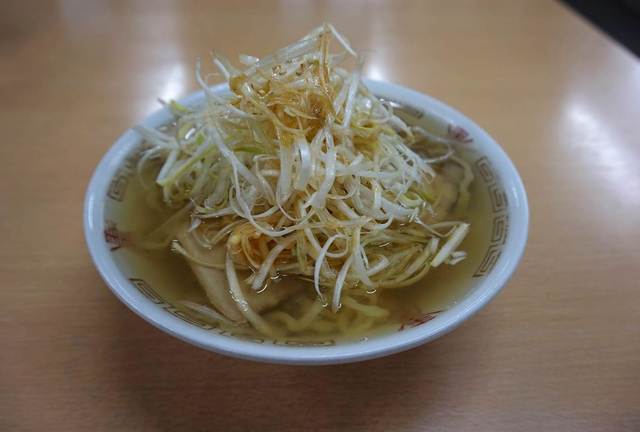
For dinner I took an old 2-car DMU (Diesel Multiple Unit) train to Kitakata, a city famous for its ramen. The Kitakata ramen is one of three top ramen in Japan, alongside Sapporo Ramen and Hakata Ramen.
After travelling to Kitakata I walked through the dark residential neighbourhoods of the city and finally making my way 30 minutes before it closed. The ramen was so delicious. What makes it different from the rest is the use of wavy noodles which holds more of the soup than straight noodles.
So that is it, this travel report covered a lot of Aizu-Wakamatsu. I would love to come back here but there are other places to visit in Japan. See you in the next travel report!
| previous post |
| next post |
